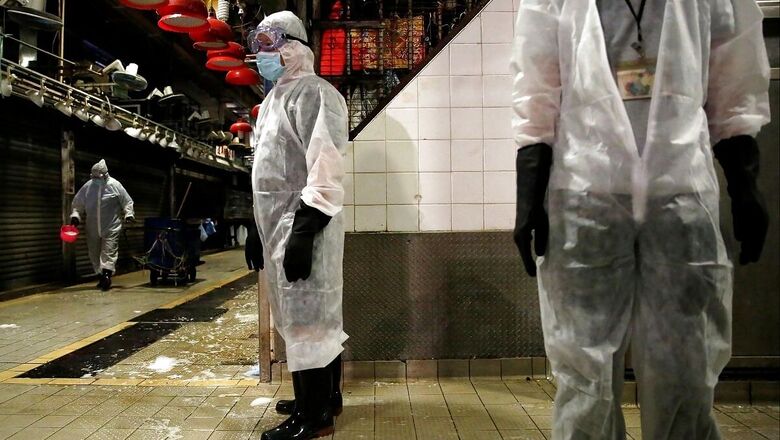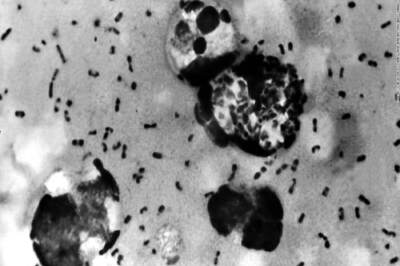
views
Earlier this week, the University of Hong Kong (HKU) published a report confirming the world’s first coronavirus reinfection case. A 33-year old man from Hong Kong tested positive for the infection 142 days after he had tested positive for the first time in March. The patient was returning to Hong Kong from Spain via United Kingdom and was screened at the airport. Researchers from HKU conducted a genome sequencing study to confirm the second instance of infection and to differentiate reinfection from viral shedding.
Based on the study and report of HKU’s microbiology team, News18 explains what we know so far about the first confirmed case of reinfection.
The Case History of the Patient
The 33-year old male patient is a resident of Hong Kong and a healthy person. He was first diagnosed with Covid-19 on March 26, 2020 through a RT-PCR test. During the first episode, he had cough, sputum, sore throat, fever and headache for three days and was hospitalised on March 29. However, his symptoms had subsided by the time he was admitted and he was discharged on April 14, after he tested negative twice.
He tested positive for Covid-19 the second time on August 15, 2020, at the Hong Kong airport after he returned from Spain via UK. He was asymptomatic all along and his temperature, pulse, blood pressure, blood oxygen levels, chest radiographs were all normal. During hospitalisation, he was not given antiviral treatment.
His serum was collected to test for IgG antibodies during the first and second episode. During the first episode of infection, no antibodies were found. However, during his ‘reinfection’, antibodies were found, but on day 5 of hospitalisation. But the report carried a caveat that serum samples from the later stages of first episode were not available and thus one should not rule out the possibility that the patient developed antibody response then, as well.
Method Employed to Confirm Reinfection
The researchers wanted to ensure that the positive test result was not due to viral shedding. Viral shedding means the expulsion and release of virus progeny after successful reproduction during a host-cell infection. Once replication has been completed and the host cell is exhausted of all resources in making viral progeny, the viruses may begin to leave the cell by several methods.
To be sure about the reinfection, the researchers opted to carry out a whole genome sequencing of the patient’s oral swab samples. A comparative genome analysis was conducted to differentiate reinfection from persistent viral shedding, the HKU team’s report said. This would show if the strain found during the first and second episode were similar or different.
The analysis compared the sample collected during the second episode with strains from Hong Kong, UK, Spain and to the sample collected during the first episode.
What Did the Researchers Find Out?
The whole genome analysis showed that the first viral genome (sequenced using the swab samples from March) belonged to a different clade or lineage compared to the second viral genome. This suggested that the virus strain detected in the second episode was completely different from the strain found in the first episode, HKU’s report said.
“The first viral genome is mostly related to strains from the United States of America or England, collected in March and April 2020. The second viral genome is most closely related to strains from Switzerland and England collected in July and August 2020,” the report stated.
What Are the Implications of These Findings?
The researchers from HKU said that it is unlikely that herd immunity can eliminate SARS-COV-2 and that the second infection in the patient was milder compared to the first one. “Covid-19 will likely continue to circulate in the human population as in the case of other human coronaviruses. In some instances, re-infection occurs despite a static level of specific antibodies. Second, vaccine studies should also include patients who recover from Covid-19,” the report said.
What Were the Findings on Antibody Response?
The HKU report said that initially, antibody response was not detected in the patient in the second instance of infection, but added that the residual low concentration of antibody may have helped in controlling the virus.
More importantly, the researchers found variations in the spike protein of the virus between the two episodes. “For our patient, there are four amino acid residues that differ in the spike protein between the first and second infection,” the report said. The spike protein of the Coronavirus acts as a key to enter its host and research is still underway globally on the implications of the mutations in the spike protein area of the virus.
HKU researchers added that more serological studies to determine if the variations in the spike protein of SARS-CoV-2 strains between the first and second infection was responsible for the re-infection.




















Comments
0 comment